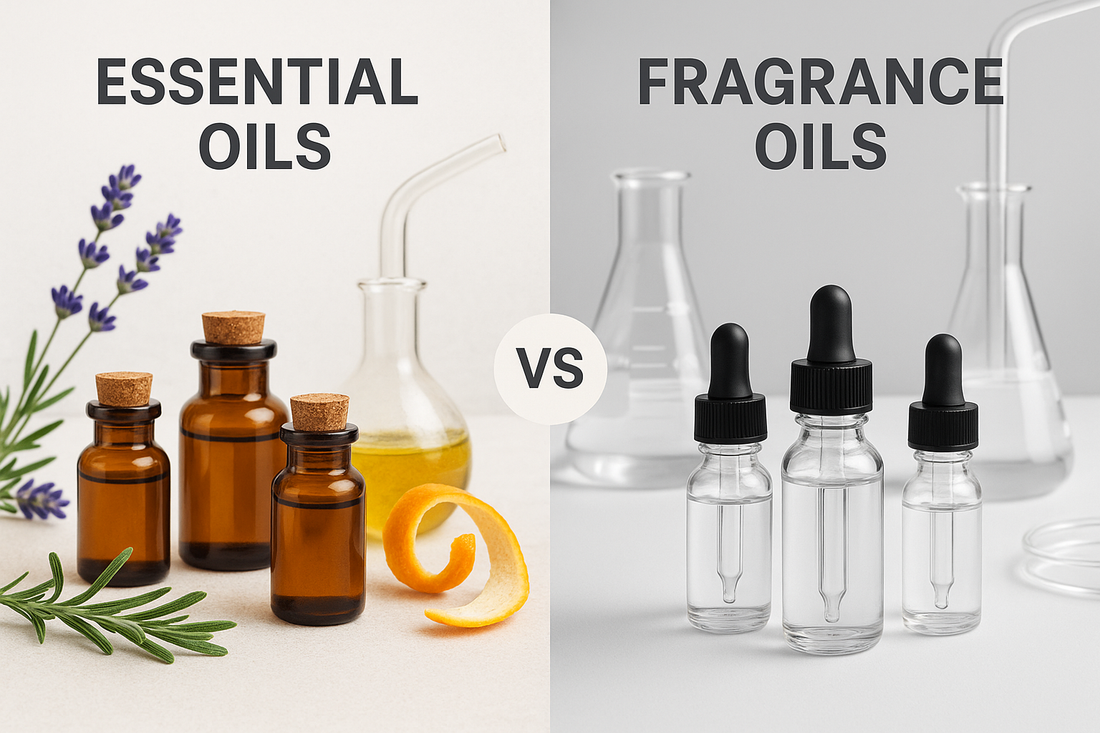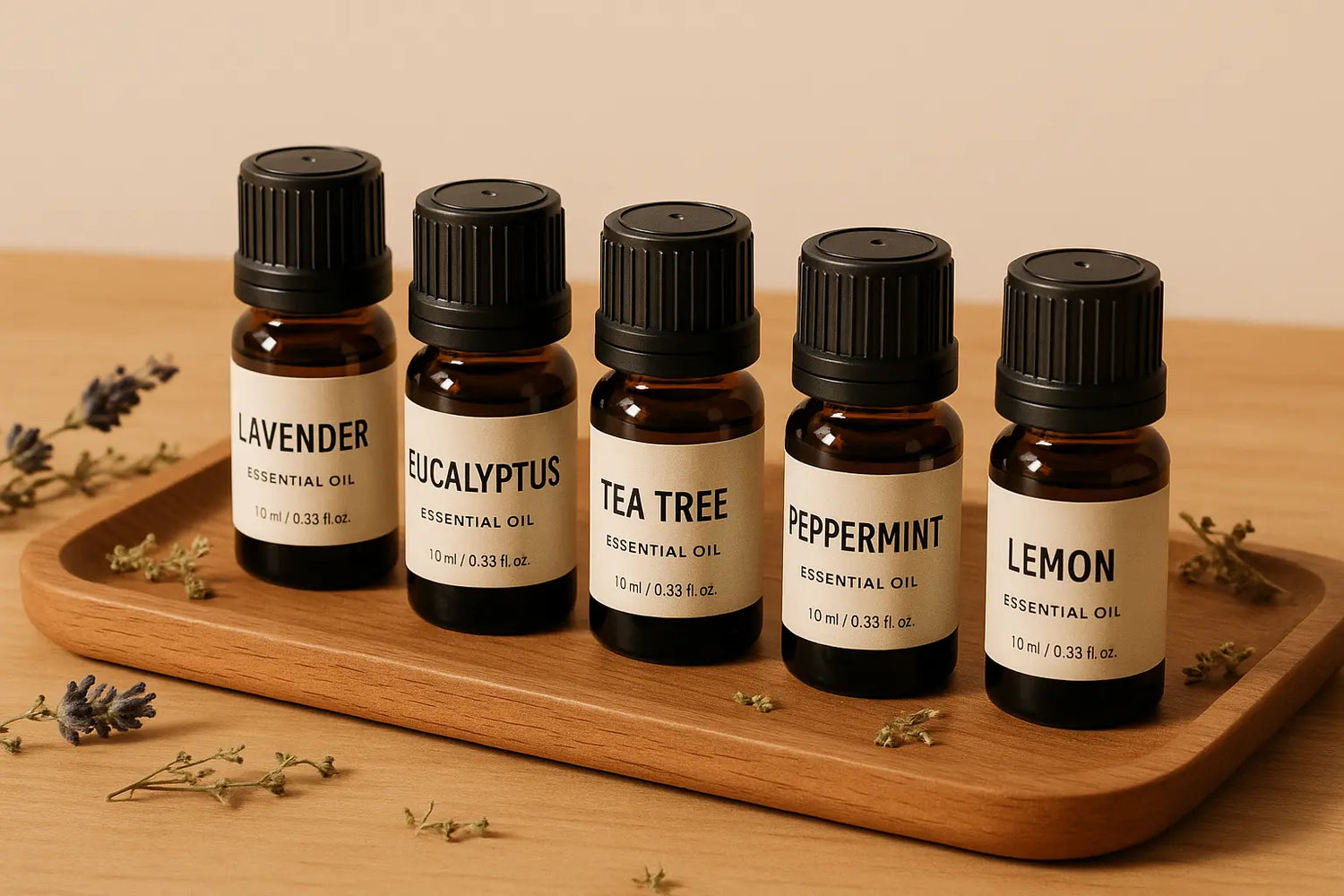
Difference Between Essential Oils and Fragrance Oils: Key Composition Facts
Share

Understanding the difference between essential oils and fragrance oils is crucial whether you're crafting candles, selecting scents for your home, or exploring natural wellness. While both types of oils serve to add scent and ambiance, they differ fundamentally in their composition and source. Knowing these differences can guide informed choices on safety, sustainability, aroma quality, and product application. This article breaks down the key composition facts that distinguish essential oils from fragrance oils and explores their implications for uses like candle making, aromatherapy, and personal care.
What is the Difference Between Essential Oils and Fragrance Oils?
Natural vs Synthetic Origins
Essential oils are naturally derived substances extracted from plants. They capture the "essence" of the plant’s aroma and bioactive compounds. Common extraction methods include steam distillation, cold pressing, or solvent extraction. These oils represent complex mixtures of hundreds of natural chemical constituents that vary depending on plant species, geography, and season.
In contrast, fragrance oils are primarily synthetic blends created in laboratories. They may contain pure synthetic aroma compounds, natural isolates, or a mixture of both. Their formulas are engineered to deliver specific, consistent scents that may replicate natural smells or invent entirely new ones. Fragrance oils often include carrier oils or additives to stabilize the scent and improve usability.
Composition and Purity
Essential oils are typically 100% pure natural extracts without added chemicals or synthetic ingredients. This purity brings therapeutic benefits and natural variability but can also cause inconsistencies in scent strength and aroma profile between batches.
Fragrance oils, however, offer consistency and long shelf life due to controlled synthesis and additives. They usually do not provide therapeutic properties but excel in delivering strong, stable fragrances suitable for commercial product formulations like candles and cosmetics.
Extraction and Production Processes
How Essential Oils Are Extracted
Essential oils are obtained directly from plants through:
- Steam distillation: The most common method, where steam passes through plant material, vaporizing volatile compounds that then condense into oil and water.
- Cold pressing: Often used for citrus peels, pressing mechanically extracts the oil without heat.
- Solvent extraction: For delicate flowers (like jasmine), chemical solvents extract the oils, which are then purified.
These processes preserve the complexity of the plant's natural chemical profile but demand significant plant material and resources.
How Fragrance Oils Are Made
Fragrance oils are created using synthetic chemistry techniques designed to reproduce or invent fragrance molecules. Types include:
- Full synthetic: Completely lab-made scent molecules without natural origin.
- Semi-synthetic: Mix natural isolates and synthetic compounds.
- Nature-identical: Molecules synthesized to be chemically identical to natural compounds.
This control over ingredients means fragrance oils can deliver scents not found in nature and maintain consistent quality regardless of external environmental factors.
Fragrance Oils vs Essential Oils in Candles
Scent Throw and Longevity
When considering fragrance oils vs essential oils in candles, performance differences emerge clearly. Fragrance oils generally provide a stronger scent throw—the intensity of the fragrance released when the candle burns—and longer-lasting aroma retention. Because they are chemically designed for combustion stability, they often disperse scent more evenly and consistently.
Essential oils tend to have a subtler aroma and sometimes a shorter scent lifespan in wax. Their volatile components can degrade quickly under heat, reducing the scent's lasting power.
Safety and Candle Making Considerations
Using essential oils in candles requires careful temperature management to avoid scent degradation. High heat can alter the natural compounds, diminishing aroma quality. Additionally, some essential oils can irritate skin or have allergenic components, so candles made exclusively from essential oils may not suit all consumers.
Fragrance oils are formulated for safer use within candle wax. They usually contain stabilizers and fewer allergens, reducing the risk of adverse reactions and improving product safety.
Health, Therapeutic Benefits, and Allergens
Aromatherapy Properties
Essential oils provide natural therapeutic benefits due to their complex chemical profiles. For example, lavender oil is renowned for relaxation and sleep support, while eucalyptus oil has respiratory benefits. This makes essential oils popular in aromatherapy and personal care products where wellness is a priority.
Potential Allergens and Sensitivities
Despite their natural origin, essential oils can cause allergic reactions or skin irritation in sensitive individuals. Their natural variability means batch chemical composition can differ, impacting allergen content. Proper dilution, patch testing, and usage guidance are essential.
Fragrance oils generally have more uniform chemical profiles. Although synthetic, manufacturers can tailor formulas to reduce common allergens or irritants, making them preferable for people with sensitivities or for products requiring hypoallergenic certification.
Environmental Impact and Sustainability
Resource Use and Biodiversity Concerns
Essential oil production often demands large quantities of plant material. For example, extracting sandalwood or rose oil can strain natural resources and contribute to deforestation or habitat loss if not sustainably sourced. Climate variability and farming practices also affect crop yields and oil quality.
Synthetic Oils and Environmental Footprint
Fragrance oils, manufactured synthetically, reduce dependence on large-scale harvesting of plants. Modern green chemistry innovations have helped create more sustainable synthetic ingredients, using renewable feedstocks and reducing chemical waste. However, the environmental impact varies by production methods and carrier oils used.
Applications and Usage Examples
Where Essential Oils Shine
- Aromatherapy diffusers to promote wellness.
- Natural skincare and massage oils leveraging plant benefits.
- Eco-conscious candle making favoring natural scent profiles.
- DIY room sprays and potpourri with therapeutic qualities.
When to Choose Fragrance Oils
- Commercial candle production requiring consistent scent and safety.
- Scented body lotions and soaps where fragrance stability is key.
- Perfumes and colognes demanding novel or complex scent blends.
- Products needing long shelf life and uniformity in aroma.
Summary: Key Takeaways on the Difference Between Essential Oils and Fragrance Oils
The difference between essential oils and fragrance oils lies mainly in their source and chemical composition. Essential oils are pure, natural extracts from plants offering aromatic complexity and therapeutic benefits but with variability and sustainability challenges. Fragrance oils are predominantly synthetic blends engineered for scent consistency, longevity, and customization.
For candle making, fragrance oils provide stronger, more reliable scent throws and enhanced safety, while essential oils bring natural aroma nuances and wellness properties but require more delicate handling.
Considering environmental impact, synthetic fragrance oils reduce pressure on plant resources, whereas responsibly sourced essential oils support natural, holistic living.
If you want to explore high-quality essential oils or versatile fragrance oils for your crafting and home fragrance needs, discover our essential oil collection and browse premium fragrance oils to find the perfect scent solution tailored to your lifestyle and projects.
Understanding the difference between essential oils and fragrance oils empowers you to make choices that best fit your scent preferences, safety considerations, and sustainability values.

